Introduction
In the dynamic realm of contemporary applications, real-time databases are pivotal for maintaining smooth data management and immediate updates. Engineered to handle substantial data volumes, these databases offer instantaneous access to information. This article delves into the top 10 real-time databases set to make an impact in 2024.
Understanding Real-Time Databases
Real-time databases are crafted to manage data needing immediate updates and access. Unlike conventional databases that may encounter synchronization delays, real-time databases guarantee swift reflection of data changes across all connected devices or applications. This makes them well-suited for applications with real-time collaboration, messaging, or monitoring needs.
Importance of Real-Time Databases in Modern Applications
The significance of real-time databases has grown in contemporary applications, driven by the demand for instant data updates and synchronization. From messaging apps to collaborative document editors and real-time analytics dashboards, these databases form the foundation for smooth data management and instantaneous communication. By removing delays in data synchronization, real-time databases not only improve user experience but also empower efficient, data-driven decision-making.
Top 10 Real-Time Databases
Here’s our list of the top 10 real-time databases to use in 2024.
1. Firebase Realtime Database
Firebase Realtime Database stands as a cloud-hosted NoSQL database, empowering developers to store and synchronize data in real time. Its use of a JSON data model adds flexibility and ease to the development process. As an integral component of the Firebase platform, it contributes to a robust toolkit for crafting both web and mobile applications.
Features and Benefits
A standout feature of Firebase Realtime Database is its real-time synchronization, ensuring instantaneous updates across all connected devices whenever data changes. This guarantees users constantly have the most up-to-date information. Moreover, the database provides offline support, enabling users to access and modify data even without an internet connection. To enhance security, the Firebase Realtime Database incorporates robust security rules, safeguarding sensitive data from unauthorized access.
Use Cases and Examples
Firebase Realtime Database finds widespread use in applications that demand real-time updates, including chat apps, collaborative document editors, and real-time dashboards. For instance, a messaging app leveraging the Firebase Realtime Database can promptly deliver messages to all participants, creating a seamless and real-time communication experience.
Get it here: https://firebase.google.com/
2. MongoDB
MongoDB stands out as a favored document-oriented NoSQL database, renowned for its high performance, scalability, and flexibility. Its storage of data in flexible, JSON-like documents simplifies working with and adjusting to evolving data needs. Embraced in modern applications, MongoDB excels in managing large data volumes and supports real-time updates, making it a preferred choice for developers.
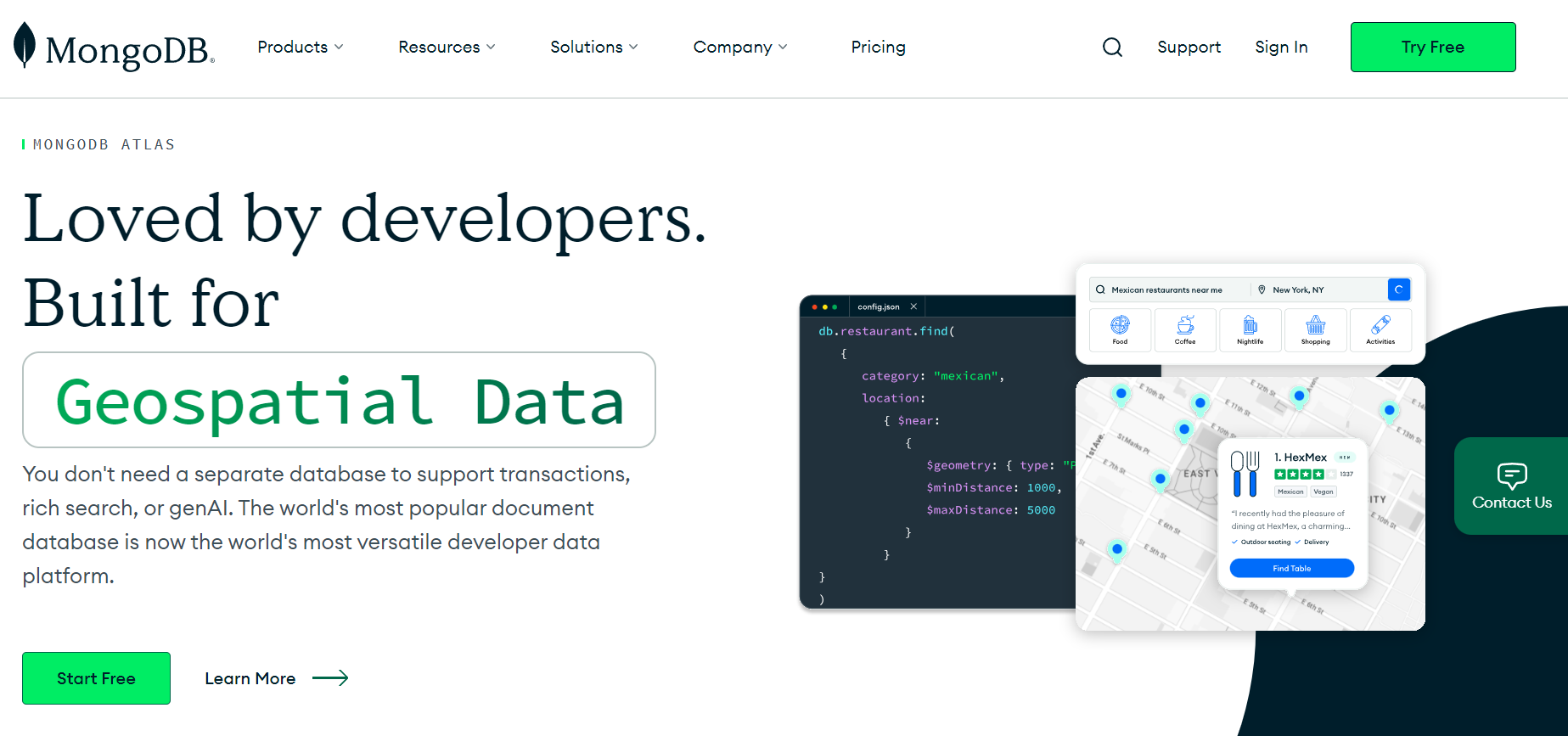
Features and Benefits
MongoDB provides an array of features making it well-suited for real-time applications. Its flexible data model allows developers to effortlessly store and retrieve complex data structures. Notably, MongoDB supports horizontal scalability, enabling applications to manage growing data loads without compromising performance. The added support for automatic sharding further enhances scalability and fault tolerance by distributing data across multiple servers.
Use Cases and Examples
MongoDB sees diverse applications in real-time scenarios, such as content management systems, e-commerce platforms, and Internet of Things (IoT) applications. An illustrative example is an e-commerce platform leveraging MongoDB to manage real-time inventory updates, guaranteeing customers consistently accurate information on product availability.
Get it here: https://www.mongodb.com/
3. Apache Cassandra
Apache Cassandra stands out as a highly scalable and distributed NoSQL database crafted to manage extensive data across multiple commodity servers. It excels in providing high availability and fault tolerance, making it apt for mission-critical applications. Cassandra’s data model is rooted in a distributed hash table, enabling efficient data distribution and replication for optimal performance.
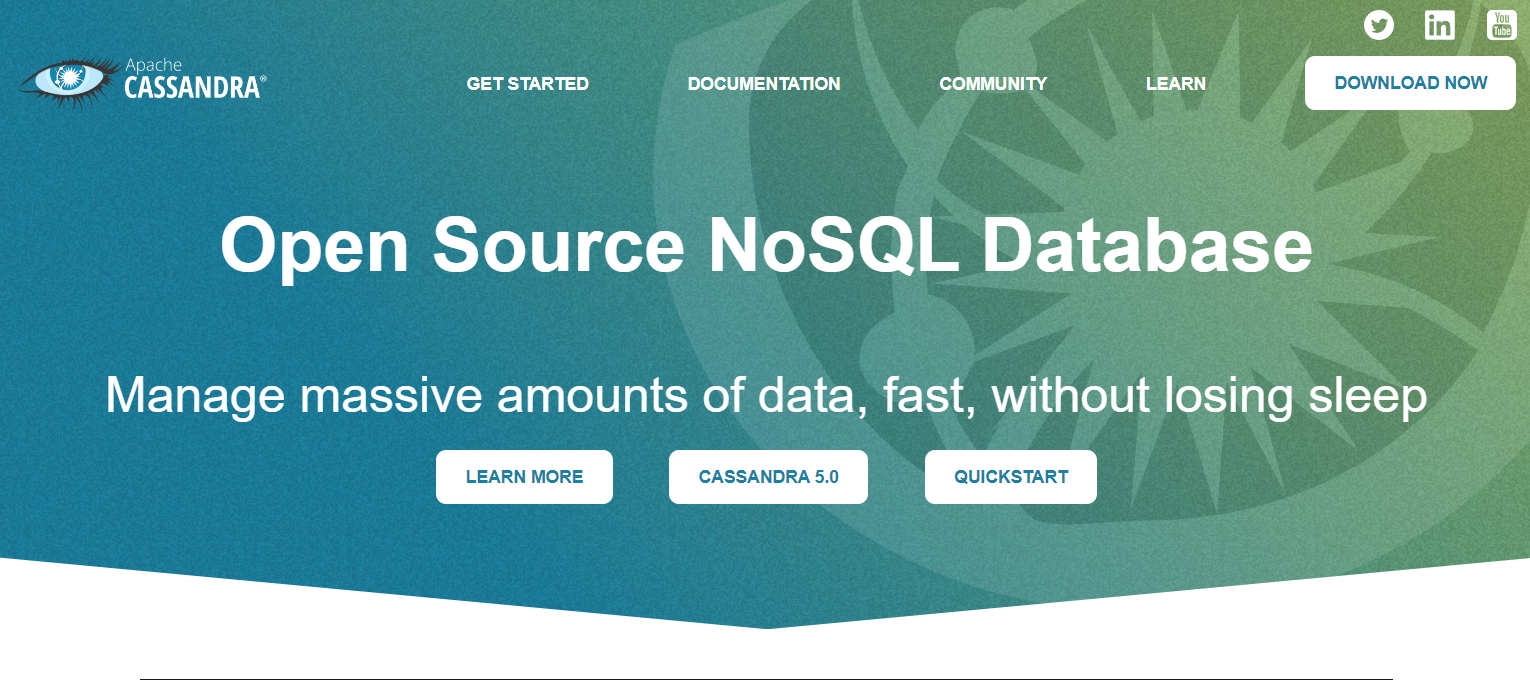
Features and Benefits
Cassandra offers several features that make it a top choice for real-time applications. Its decentralized architecture ensures high availability and fault tolerance, as data is replicated across multiple nodes. It also provides tunable consistency, allowing developers to balance data consistency and performance according to their application’s requirements. Additionally, Cassandra supports linear scalability, enabling applications to handle massive data loads.
Use Cases and Examples
Cassandra finds broad usage in applications demanding high scalability and fault tolerance, including real-time analytics, time series data management, and messaging platforms. Consider a real-time analytics platform leveraging Cassandra; it adeptly processes and analyzes substantial data volumes in real-time, delivering valuable insights to users.
Get it here: https://cassandra.apache.org/_/index.html
4. Redis
Redis stands as an open-source, in-memory data structure store versatile enough to serve as a database, cache, or message broker. Renowned for high performance and low latency, Redis is particularly well-suited for real-time applications. Its support for diverse data structures such as strings, lists, sets, and sorted sets enables flexible data storage and manipulation.
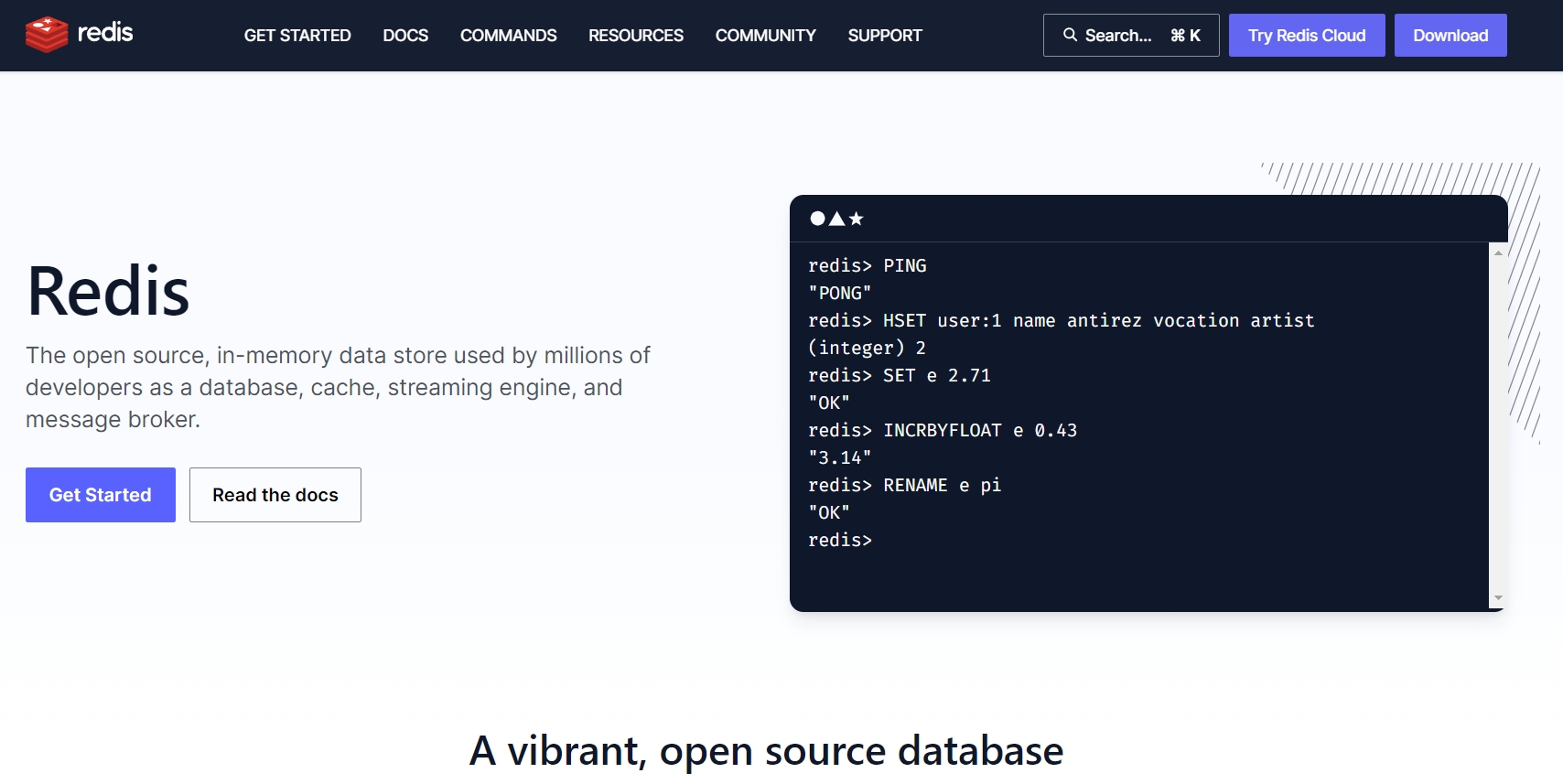
Features and Benefits
Redis boasts numerous features that contribute to its popularity in real-time applications. With in-memory storage facilitating rapid data access, it proves ideal for low-latency requirements. The inclusion of built-in replication and high availability ensures data durability and fault tolerance. Moreover, Redis supports pub/sub messaging, fostering real-time communication among diverse components within an application.
Use Cases and Examples
Redis finds extensive application in a variety of real-time scenarios, encompassing caching, session management, and real-time leaderboards. In the realm of gaming, for example, Redis can be employed to uphold real-time leaderboards, ensuring timely updates to scores and rankings as players advance through the game.
Get it here: https://redis.io/
5. Apache Kafka
Apache Kafka stands as a distributed streaming platform, adept at processing and storing real-time data streams. Its strengths lie in high throughput, fault tolerance, and scalability, making it well-suited for managing substantial data volumes. At its core, Kafka operates on a publish-subscribe model, with producers disseminating data to topics and consumers subscribing to these topics to access the data.

Features and Benefits
A standout feature of Apache Kafka is its prowess in managing high-throughput, low-latency data streams. With the capability to process millions of messages per second, it excels in real-time data processing and analytics. Kafka ensures fault tolerance and high availability by replicating data across multiple brokers. Furthermore, it supports stream processing, enabling real-time data transformations and aggregations.
Use Cases and Examples
Applications demanding real-time data streaming and processing, like log aggregation, event sourcing, and real-time analytics, find Apache Kafka indispensable. For instance, a Kafka-powered log aggregation system excels at collecting and processing logs from various sources in real time, delivering valuable insights and robust monitoring capabilities.
Get it here: https://kafka.apache.org/
6. Amazon DynamoDB
Amazon DynamoDB, an AWS fully managed NoSQL database service, stands out with high performance, scalability, and availability, catering to real-time application needs. Built on key-value pairs, DynamoDB ensures rapid data access and retrieval.
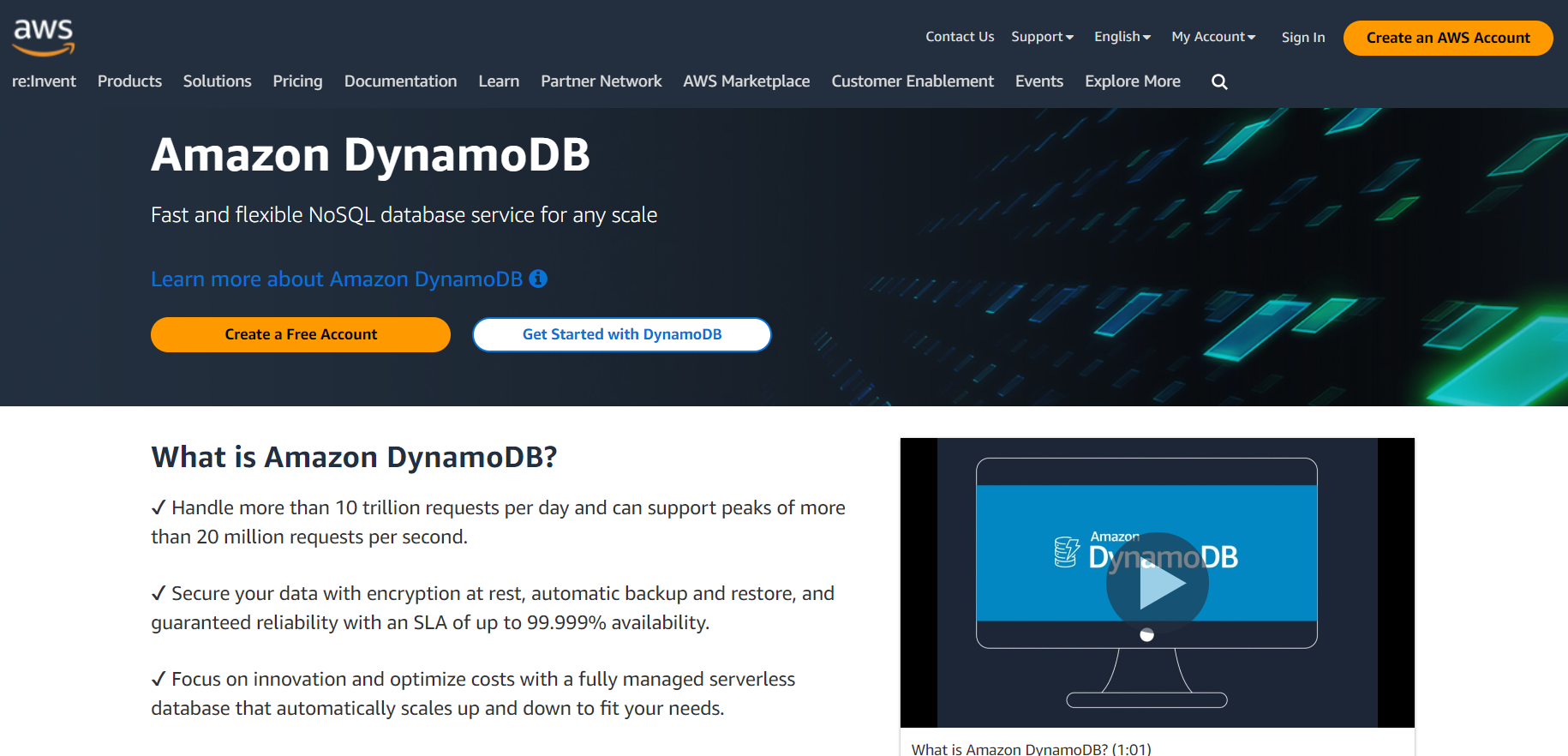
Features and Benefits
DynamoDB offers several features that make it a top choice for real-time applications. Its fully managed nature eliminates the need for database administration, allowing developers to focus on building their applications. DynamoDB also provides automatic scaling, ensuring that applications can handle increasing data loads without manual intervention. Additionally, it supports global replication, enabling data to be replicated across multiple regions for improved availability and disaster recovery.
Use Cases and Examples
Amazon DynamoDB is used in a wide range of real-time applications, including user authentication, real-time bidding, and IoT data management. For instance, a real-time bidding platform built on DynamoDB can handle high volumes of bid requests and deliver real-time ad placements to users.
Get it here: https://aws.amazon.com/dynamodb/
7. Microsoft Azure Cosmos DB
Microsoft Azure Cosmos DB is a globally distributed, multi-model database service provided by Microsoft Azure. It offers high scalability, low latency, and global availability, making it suitable for real-time applications. Cosmos DB supports multiple data models, including key-value, document, graph, and column family, allowing developers to choose the most appropriate model for their application.
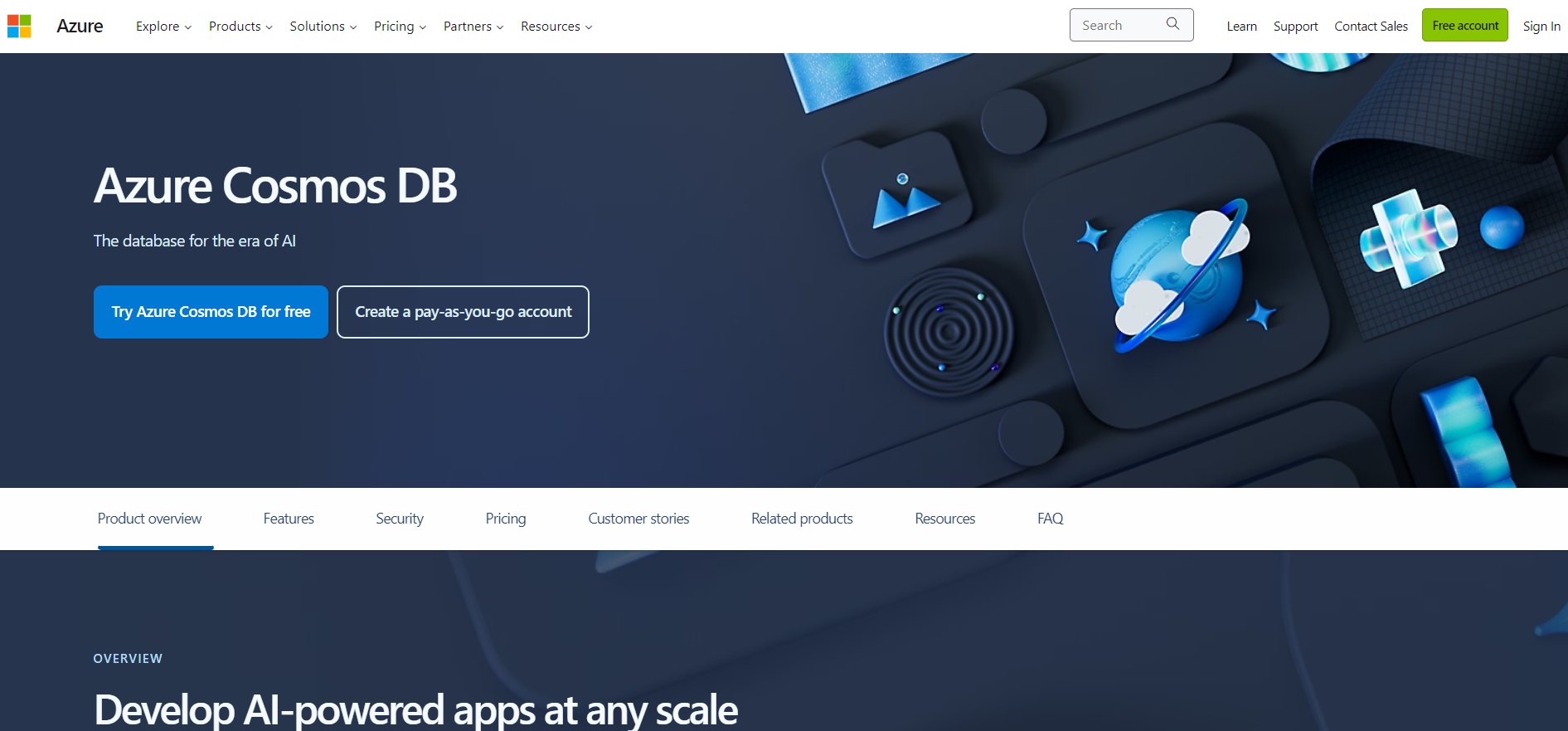
Features and Benefits
Cosmos DB offers several features that make it a powerful choice for real-time applications. Its global distribution allows for low-latency access to data from anywhere in the world, ensuring a seamless user experience. Cosmos DB also provides automatic indexing and query optimization, enabling fast and efficient data retrieval. Additionally, it offers comprehensive SLAs (Service Level Agreements) for throughput, latency, and availability.
Use Cases and Examples
In diverse real-time applications like content management systems, social media analytics, and personalized recommendations, Microsoft Azure Cosmos DB finds utility. For instance, a Cosmos DB-based social media analytics platform can analyze real-time social media data, uncovering valuable insights into user behavior and trends.
Get it here: https://azure.microsoft.com/en-in/products/cosmos-db
8. FaunaDB
FaunaDB, a globally distributed, serverless, and transactional NoSQL database, caters to modern applications with features like strong consistency, low latency, and automatic scaling. Its data model, rooted in documents and collections, facilitates flexible data storage and retrieval, making it apt for real-time applications.
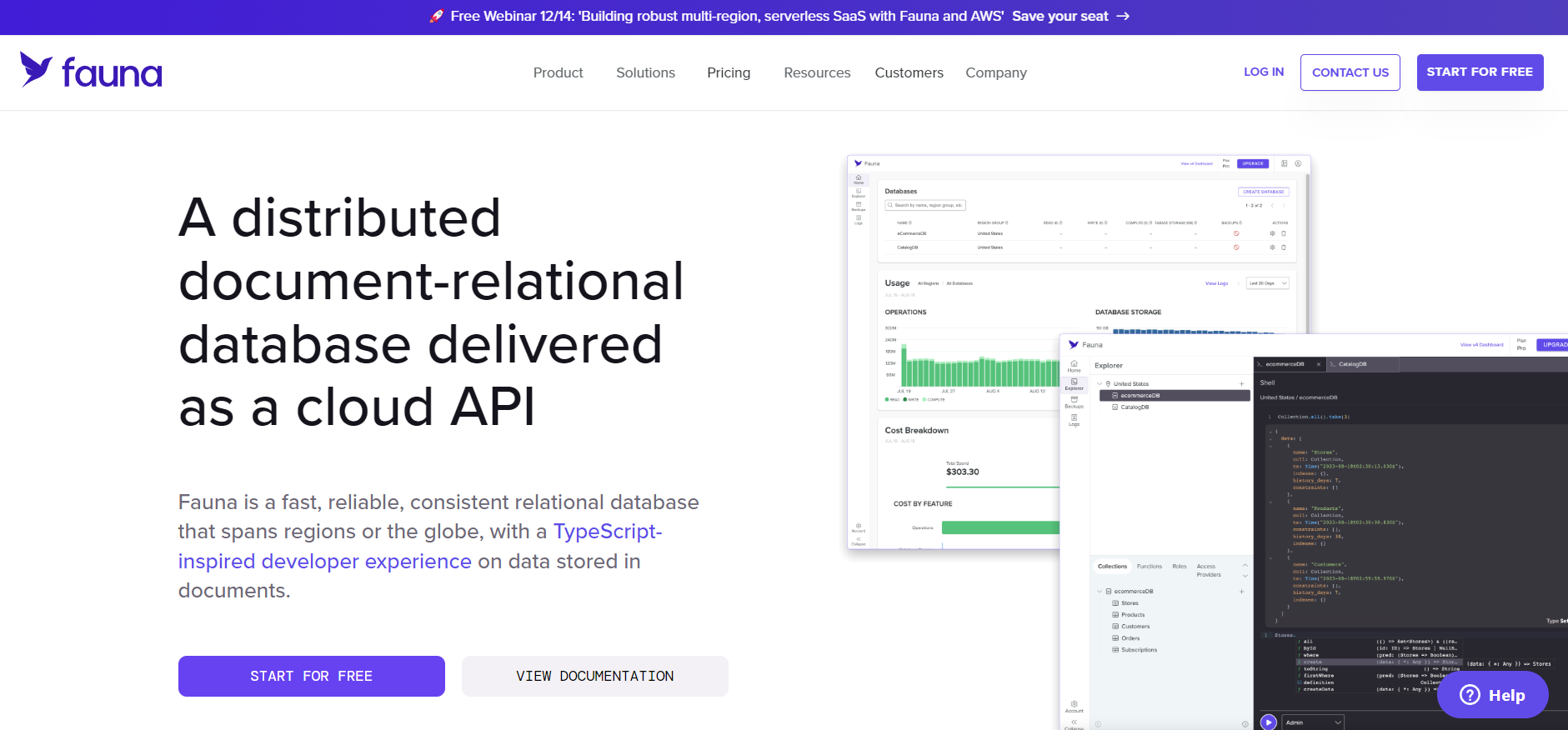
Features and Benefits
FaunaDB offers several features that make it a compelling choice for real-time applications. Its strong consistency ensures that data is always up-to-date and reflects the latest changes. FaunaDB also provides automatic scaling, allowing applications to handle increasing data loads without manual intervention. Additionally, it supports ACID (Atomicity, Consistency, Isolation, Durability) transactions, ensuring data integrity and reliability.
Use Cases and Examples
FaunaDB finds applications in diverse real-time scenarios, from e-commerce platforms to financial systems and collaborative applications. For example, a collaborative document editor powered by FaunaDB enables multiple users to edit the same document simultaneously, ensuring real-time updates for all participants.
Get it here: https://fauna.com/
9. InfluxDB
InfluxDB is an open-source, time series database designed for handling high volumes of time-stamped data. It provides high write and query performance, making it suitable for real-time data analytics and monitoring. InfluxDB’s data model is based on measurements, tags, and fields, allowing for efficient storage and retrieval of time series data.
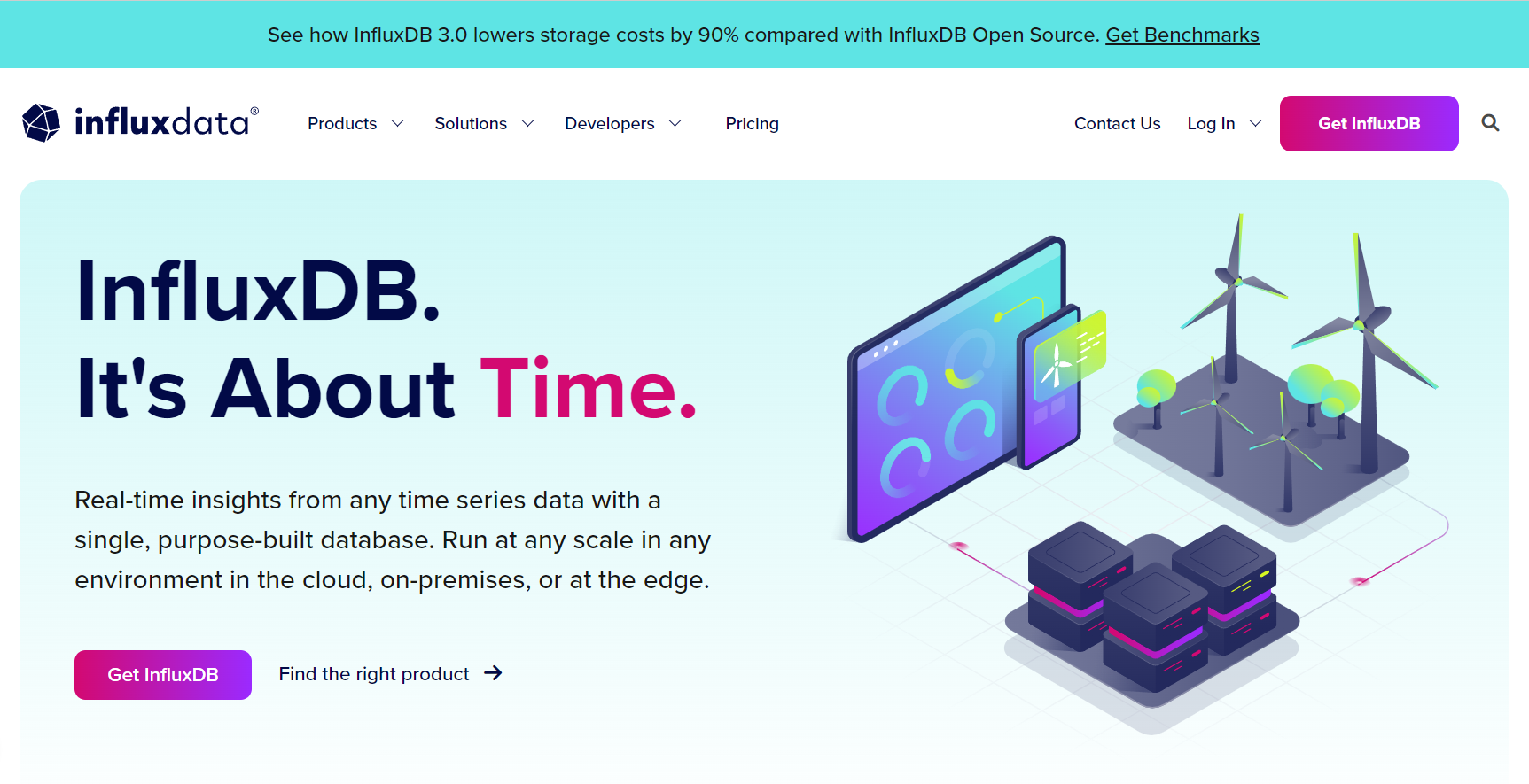
Features and Benefits
InfluxDB offers several features that make it a top choice for real-time data analytics. Its high write and query performance enables fast ingestion and retrieval of time series data. It also provides downsampling and data retention policies, allowing for efficient storage and management of historical data. Additionally, InfluxDB supports continuous queries and real-time alerting, enabling proactive monitoring and anomaly detection.
Use Cases and Examples
InfluxDB is extensively utilized in applications demanding real-time monitoring and analytics, including IoT data management, system monitoring, and sensor data analysis. For instance, an IoT platform leveraging InfluxDB can gather and analyze real-time sensor data, offering valuable insights into device performance and environmental conditions.
Get it here: https://www.influxdata.com/
10. TimescaleDB
TimescaleDB is an open-source, time-series database built on top of PostgreSQL. It combines the scalability and performance of PostgreSQL with the flexibility and ease of use of a time-series database. TimescaleDB’s data model is based on hypertables, which allow for efficient storage and retrieval of time-series data.
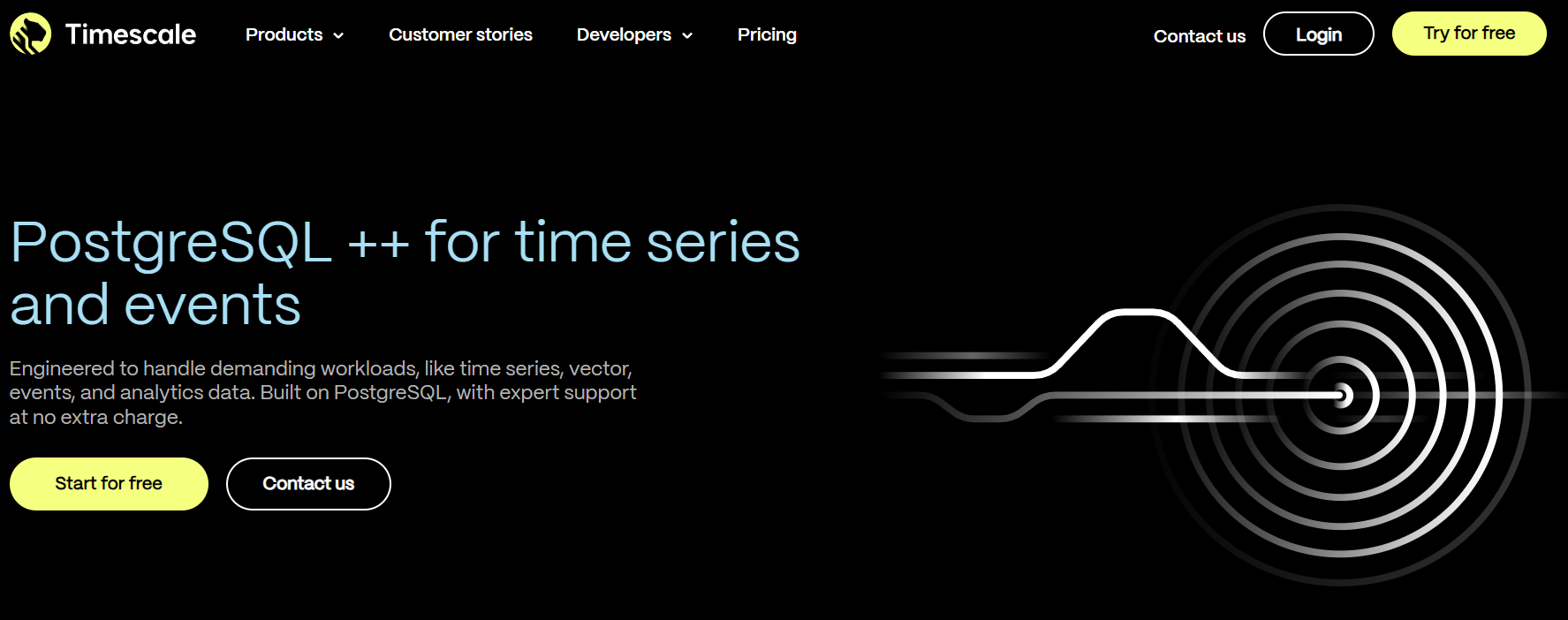
Features and Benefits
TimescaleDB offers several features that make it a powerful choice for real-time data management. Its hyper table-based data model enables efficient partitioning and compression of time-series data, resulting in improved query performance and storage efficiency. It also provides automatic data retention and continuous aggregates, allowing for efficient management and analysis of historical data. Additionally, TimescaleDB supports distributed queries, enabling horizontal scalability and fault tolerance.
Use Cases and Examples
TimescaleDB finds application in diverse real-time scenarios, such as financial analytics, industrial monitoring, and energy management. For example, a financial analytics platform utilizing TimescaleDB can efficiently store and analyze real-time market data, offering valuable insights into market trends and investment opportunities.
Get it here: https://www.timescale.com/
Conclusion
In today’s world, we rely on real-time databases to keep our apps updated and in sync instantly. There are great options out there, like Firebase Realtime Database and TimescaleDB, each with its own special features and uses. Whether you’re aiming for real-time collaboration with Firebase or keeping an eye on things with InfluxDB for monitoring, developers have plenty of choices to match their needs. Looking ahead to 2024, these real-time databases will stay vital in fueling the new wave of applications.
 NEWSLETTER
NEWSLETTER





